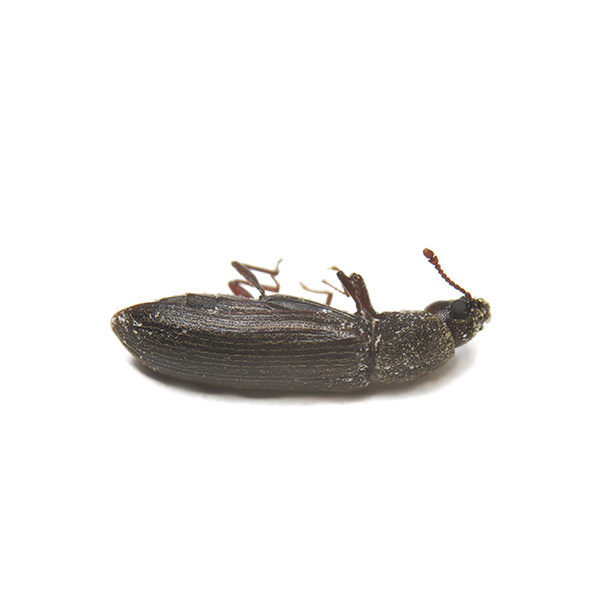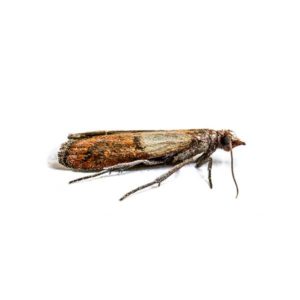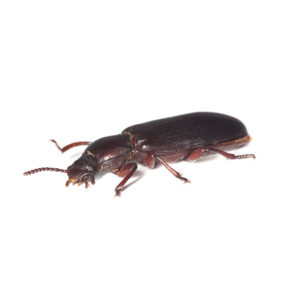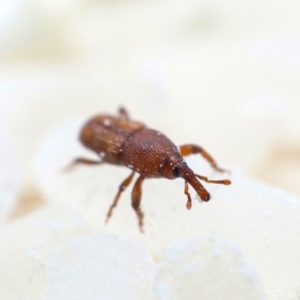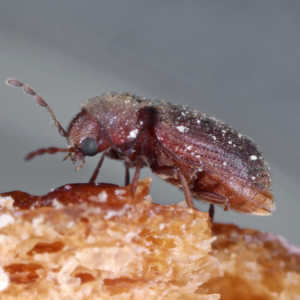Powderpost Beetles in North Carolina
Powderpost beetles are a broad category of beetles that live within and eat hardwoods, reducing timber to fine powder-like sawdust. These beetles cause millions of dollars in damage each year as they infest dry seasoned wood. In the United States, they are second only to termites in their destructiveness of wood and wood products. Powderpost beetles prefer to live deep within hardwoods, and the only indication of their presence is the sawdust they leave behind, and the pencil-sized “shot” holes that remain after adults emerge in spring. The greatest period of activity occurs during the warm season.
Because there are many different types of beetles in North Carolina, they can be difficult to distinguish, however our common beetle species can help with this.
How to Identify Wood-Boring Beetles?
Wood boring beetles, including Powderpost Beetles, can be identified by their small size (usually less than 1/4 inch), narrow, elongated bodies, and their ability to bore into wood. The most telltale sign is the presence of fine, powdery sawdust and small exit holes in wooden items.
Powderpost Beetle Habitat
Powderpost beetles live and breed in hardwoods, such as the dead branches and limbs of trees. They avoid softwoods and will not attempt to tunnel in varnished woods. Often, eggs and larvae can be sealed within hardwoods, resulting in emerging adults later on. A female powderpost beetle will lay 50 eggs at a time, in the pores of the wood. When larvae of the powderpost beetle hatch, they feed on many of the various hardwoods used in furniture, baskets, hardwood trim, and flooring. Larvae will emerge one to five years later in spring. An adult powderpost beetle will not typically live for longer than a year.
Powderpost Beetle Behaviors, Threats, or Dangers
Powderpost beetles aren’t a direct threat to humans, but they do cause millions of dollars in damage each year. Adult powderpost beetles most often select and lay eggs in wood such as oak, ash, hickory, mahogany, and walnut, and infestations are most likely to occur in wood paneling, molding, flooring, window and door frames, plywood, and furniture. Powderpost beetles are strong fliers and are attracted to light. Adults are often found near windows or on windowsills when an infestation occurs indoors. Infestations in homes are almost always due to the infestation of the wood prior to construction. If a powderpost beetle infestation is suspected, contact a local beetle control professional.
Need help with Powderpost Beetle control?
Frequently Asked Questions
Wood Boring Beetle Damage
Damage from Powderpost Beetles is characterized by fine, powdery sawdust and small, round exit holes in the wood. Infestations can go unnoticed for long periods, as most of the damage is done inside the wood, only becoming apparent when it’s considerable.
How to Get Rid of Powderpost Beetles?
Getting rid of Powderpost Beetles involves identifying and treating infested wood. This can include using insecticidal treatments, fumigation, or replacing severely damaged wood. Reducing humidity and improving ventilation are also critical steps in prevention.

